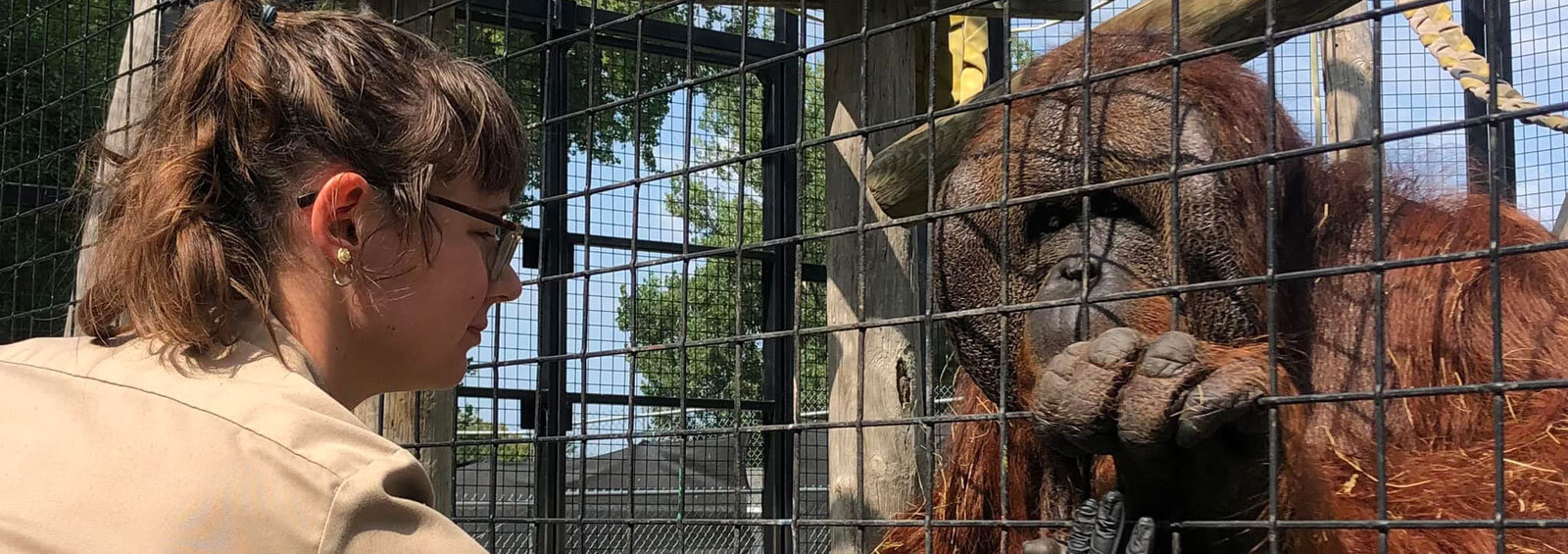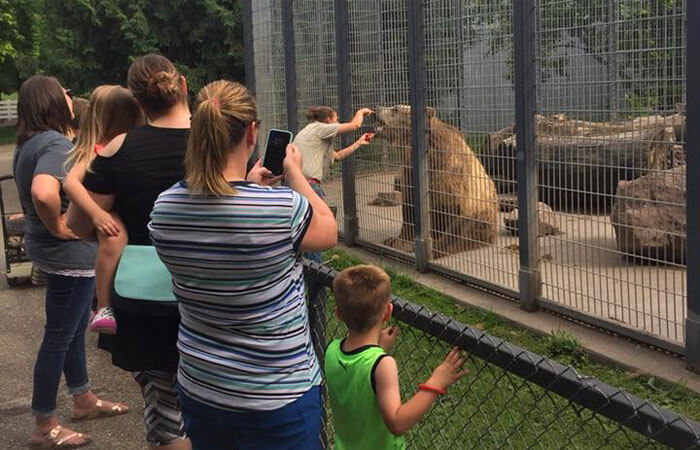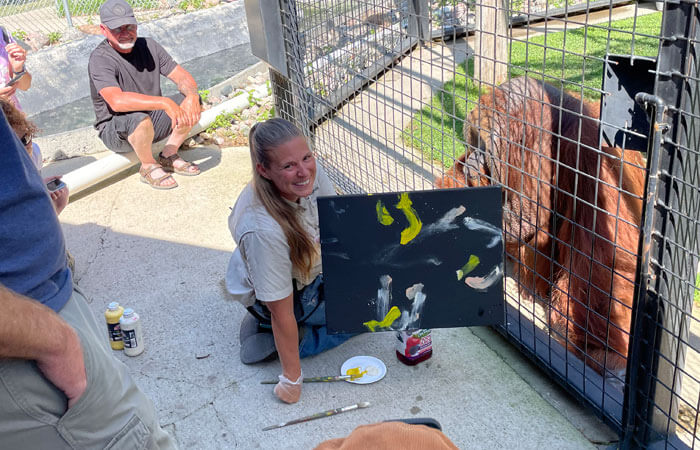Keepers give oral exams to the animals to check their teeth for cavities and their mouth and tongue for sores. Changing in eating habits is one indication that something in the mouth might be bothering the animal.

At Chahinkapa Zoo, animal training isn’t just about teaching—it’s about enriching lives, reducing stress, and fostering strong connections between animals and their caretakers. Using positive reinforcement and operant conditioning, we help our animals participate in their own care, making veterinary checkups, feeding, and daily routines safer, stress-free, and engaging.
Many of our resident species benefit from daily training sessions, including:
Otters | Orangutans | Cheetahs | Snow Leopards | Spider Monkeys | Tigers | Cougars | American Alligators | Bison | Grizzly Bears | Camels | Lemurs | Fossa | Gibbons
Training happens every day at Chahinkapa Zoo, and you’re invited to watch! Ask our trainers questions, learn how these techniques work, and see firsthand how we create a happier, healthier environment for our animals.
Visit today and experience the magic of animal training!

Keepers give oral exams to the animals to check their teeth for cavities and their mouth and tongue for sores. Changing in eating habits is one indication that something in the mouth might be bothering the animal.

Belly present is a great way for the keepers to check an animal’s abdomen for hardness, bumps, and abrasions. For female animals, keepers are able to check for pregnancy.

Enrichment painting for Tal is an extra added enrichment that he loves to do with our director, Kathy Diekman. Orangutans are extremely intelligent and therefore need extra stimulants to use all parts of their brain. Painting makes Tal think more. Tal had an art show that went national. When available, you can purchase Tal’s paintings.

Targeting is the first thing most animals are trained to do. Targeting allows the animals to focus on an object for distraction while the keepers check the animal over.

Side present mock wound treatment allows the keepers to apply swat on an animal’s side/back without having to give an anesthetic. This position also allows keepers to get a closer look at the animal’s sides for wounds and sores. Keepers could also give injections in this position if need be.